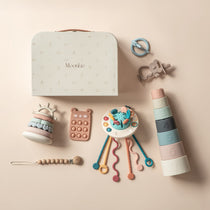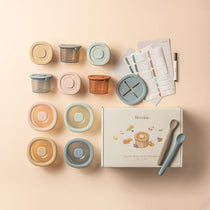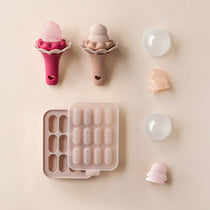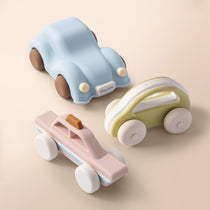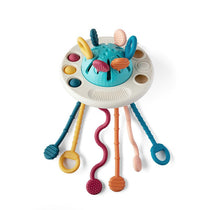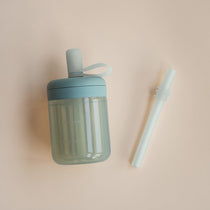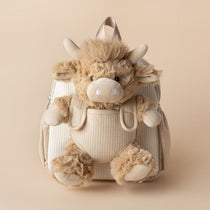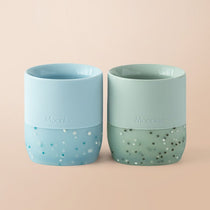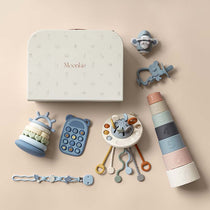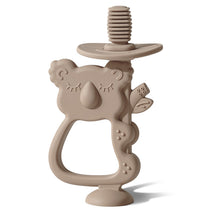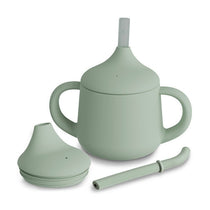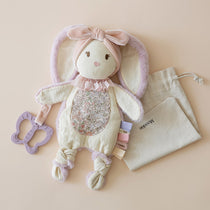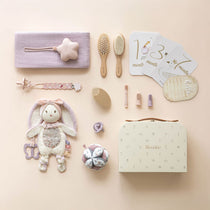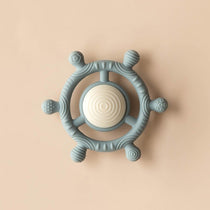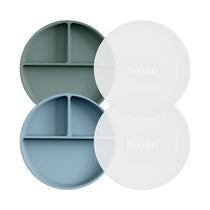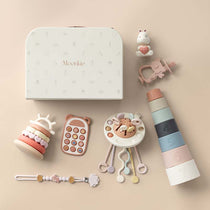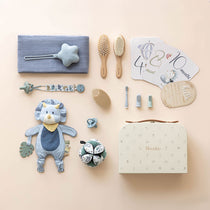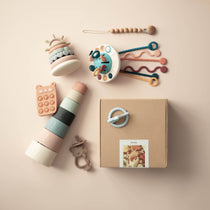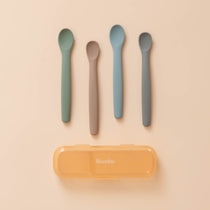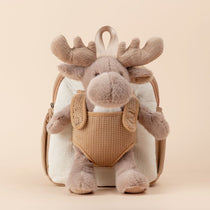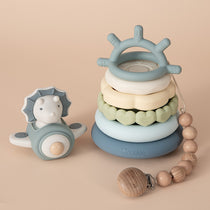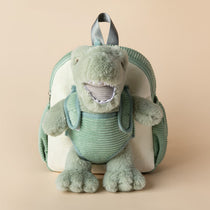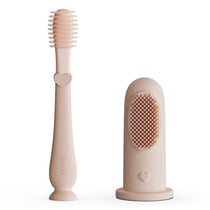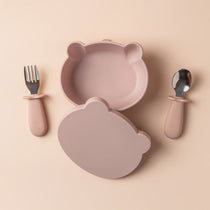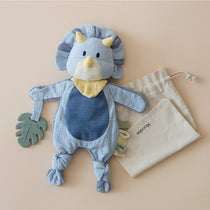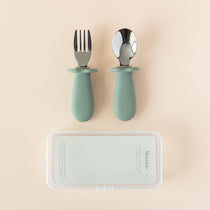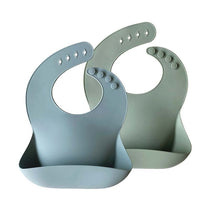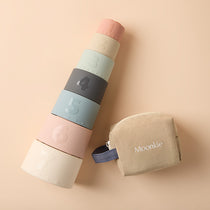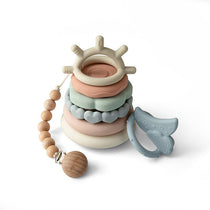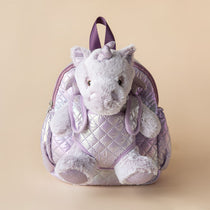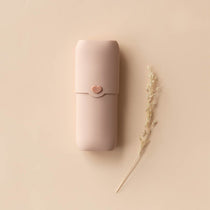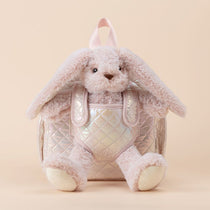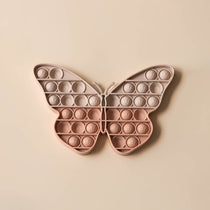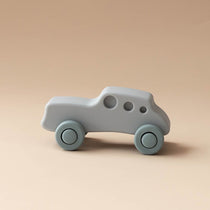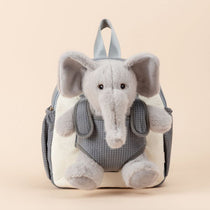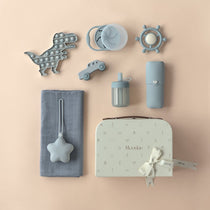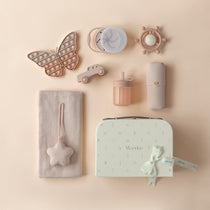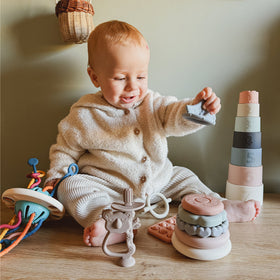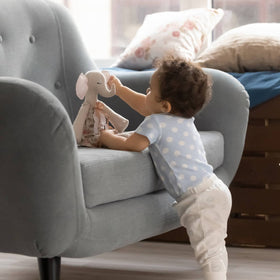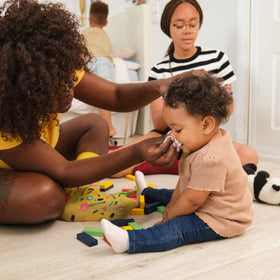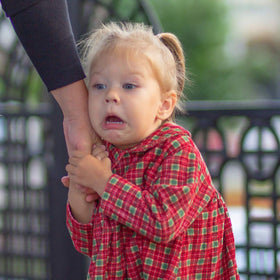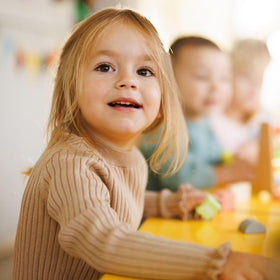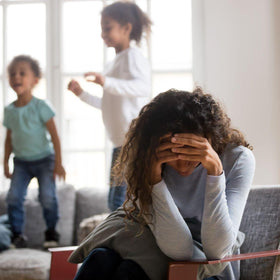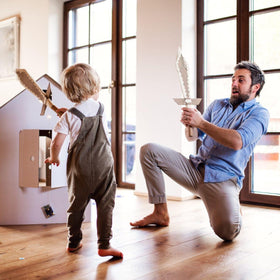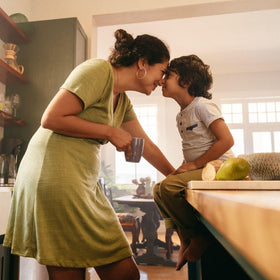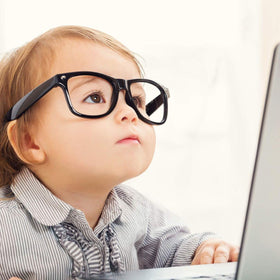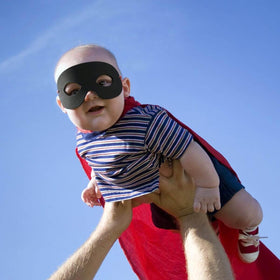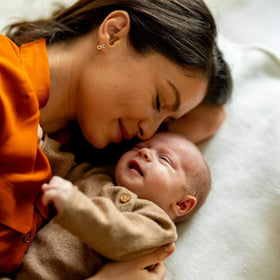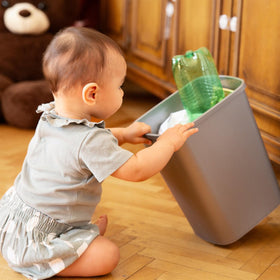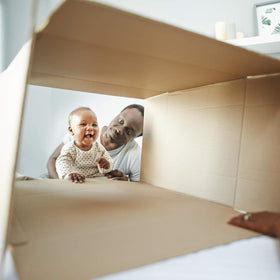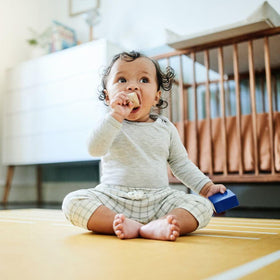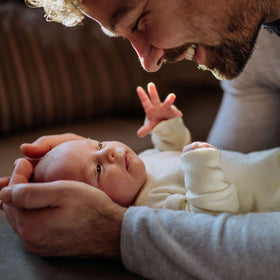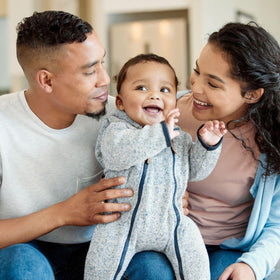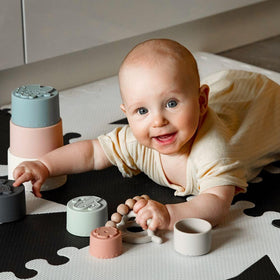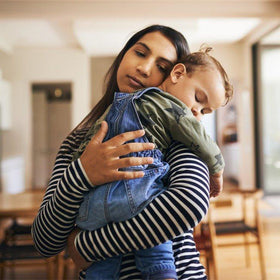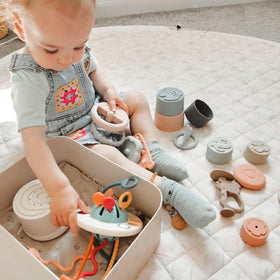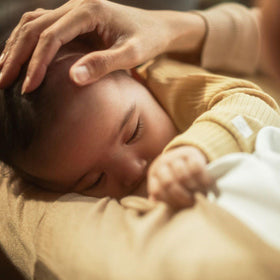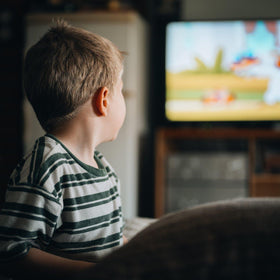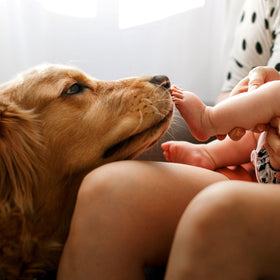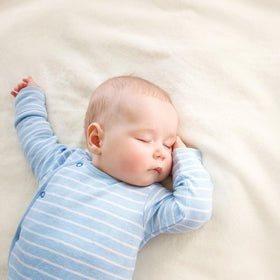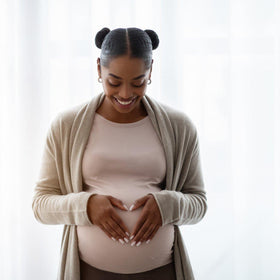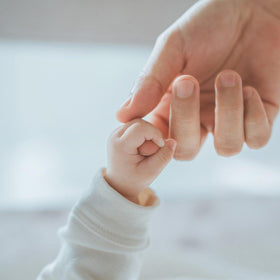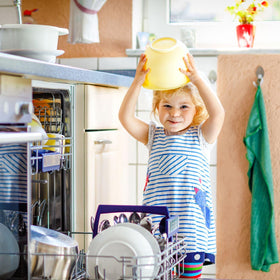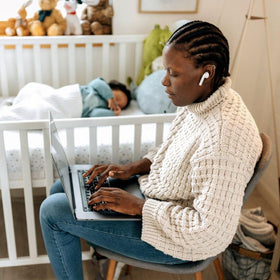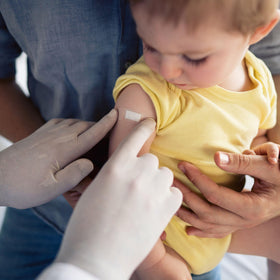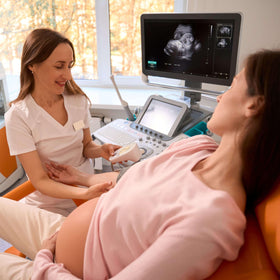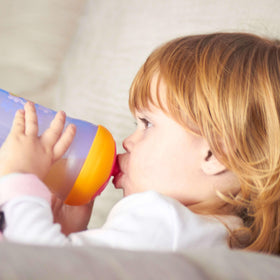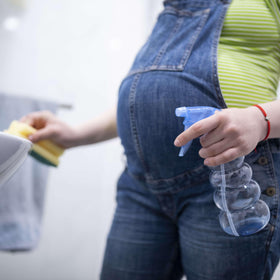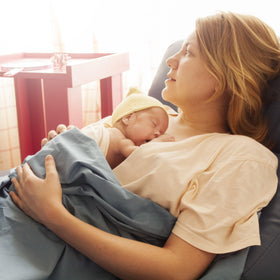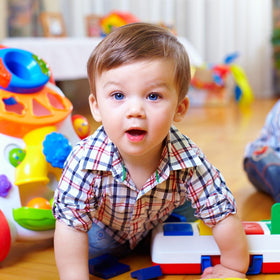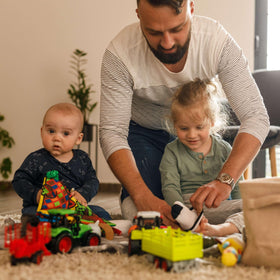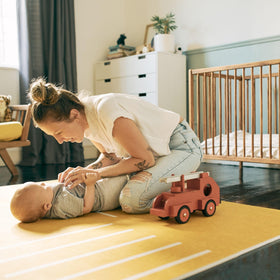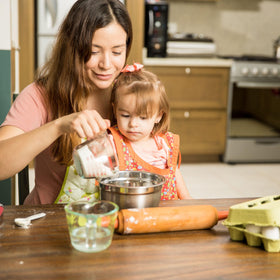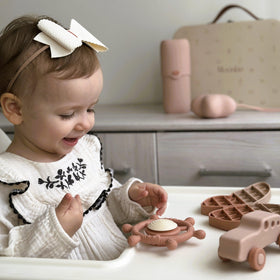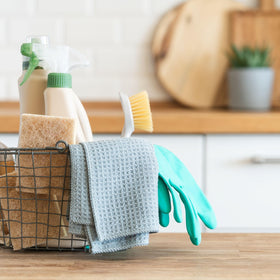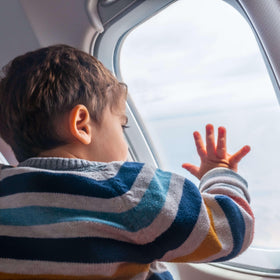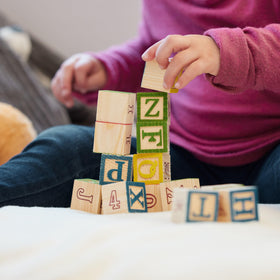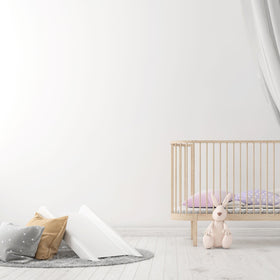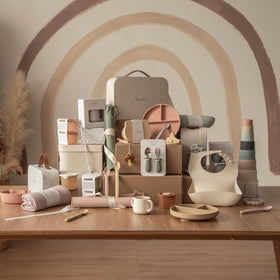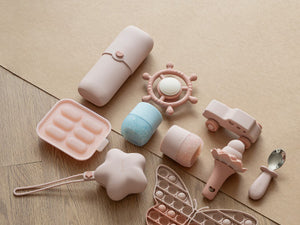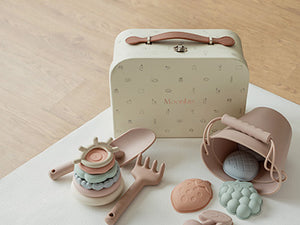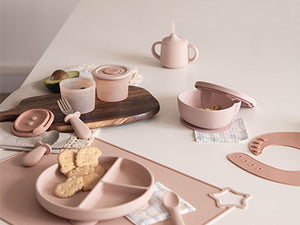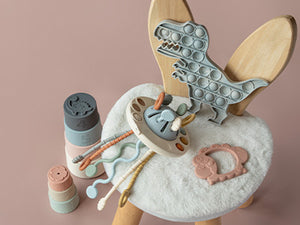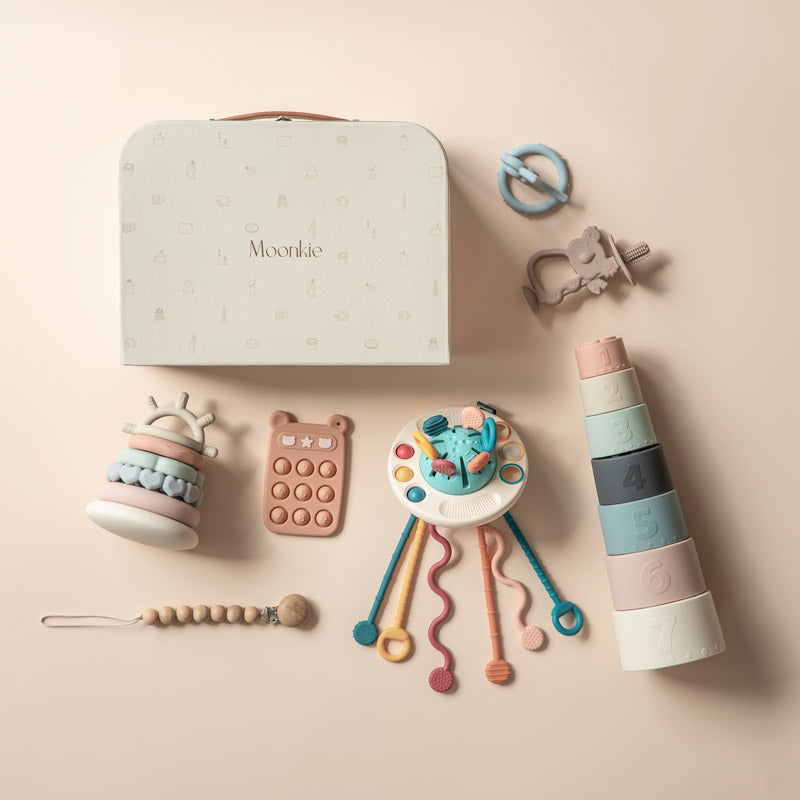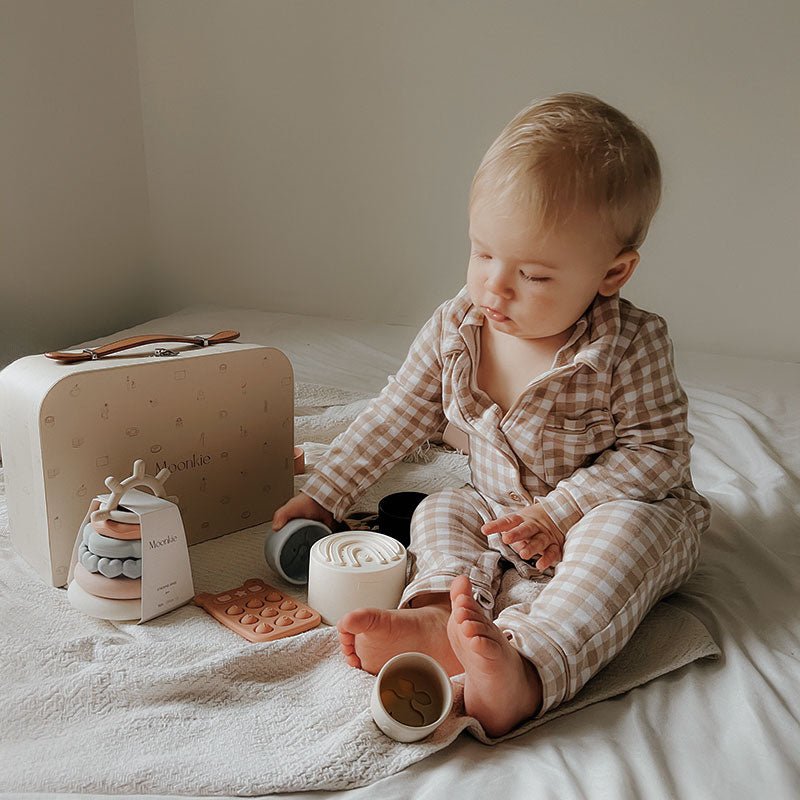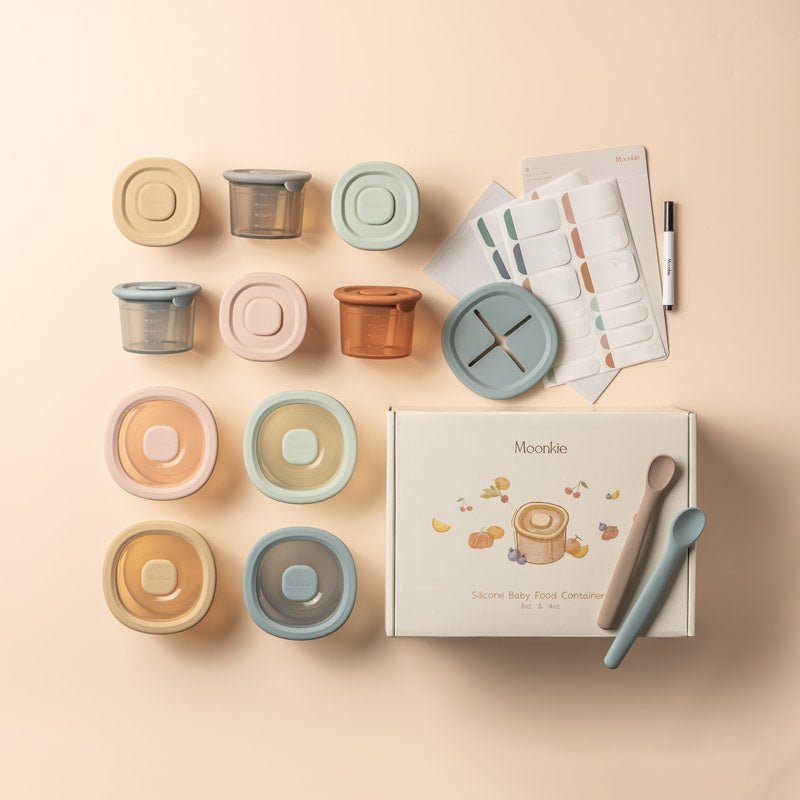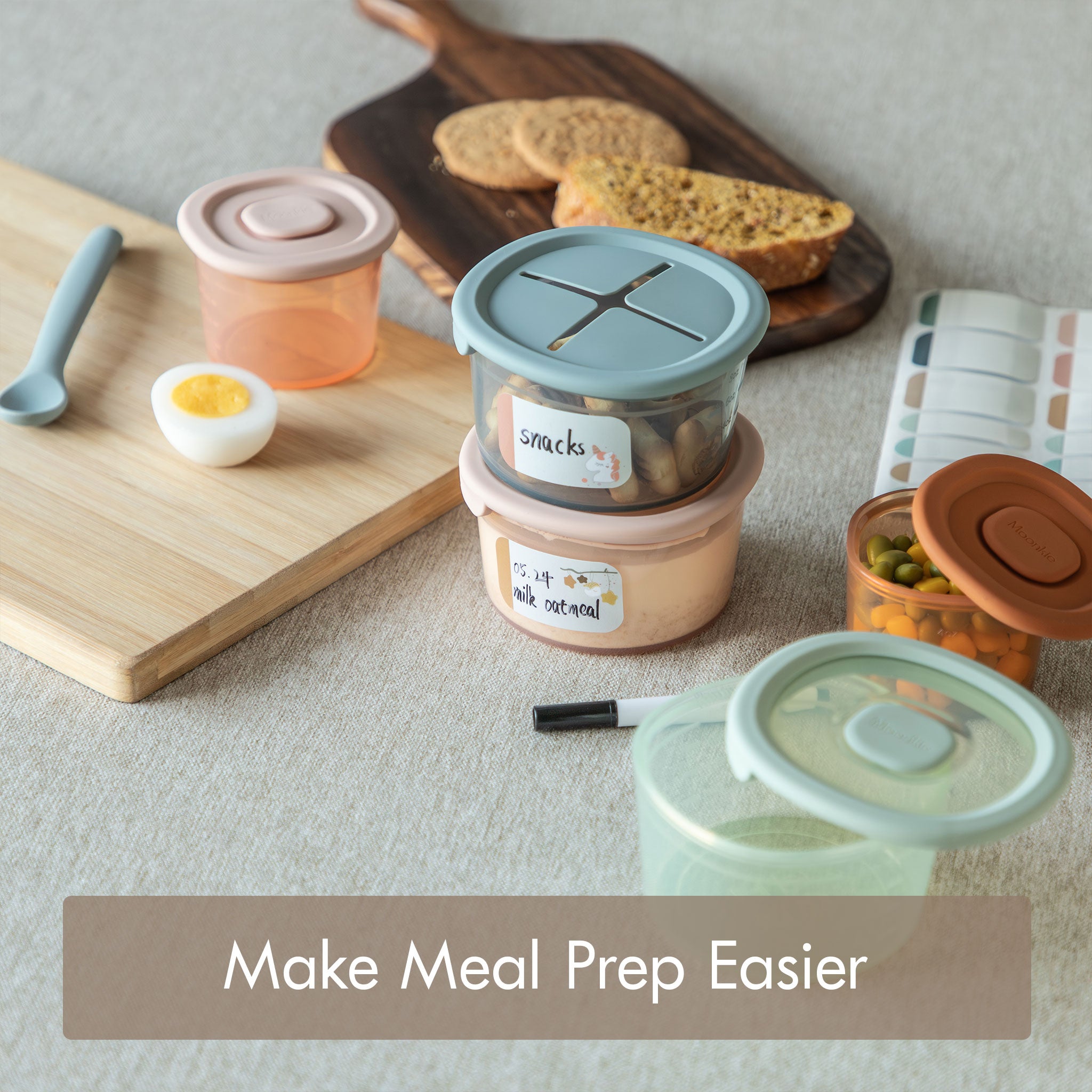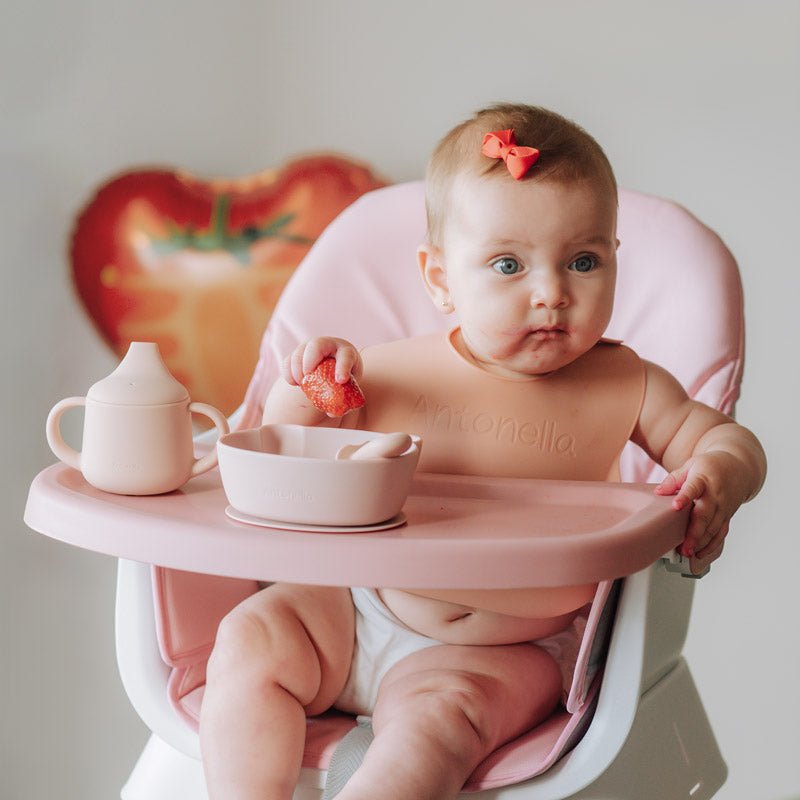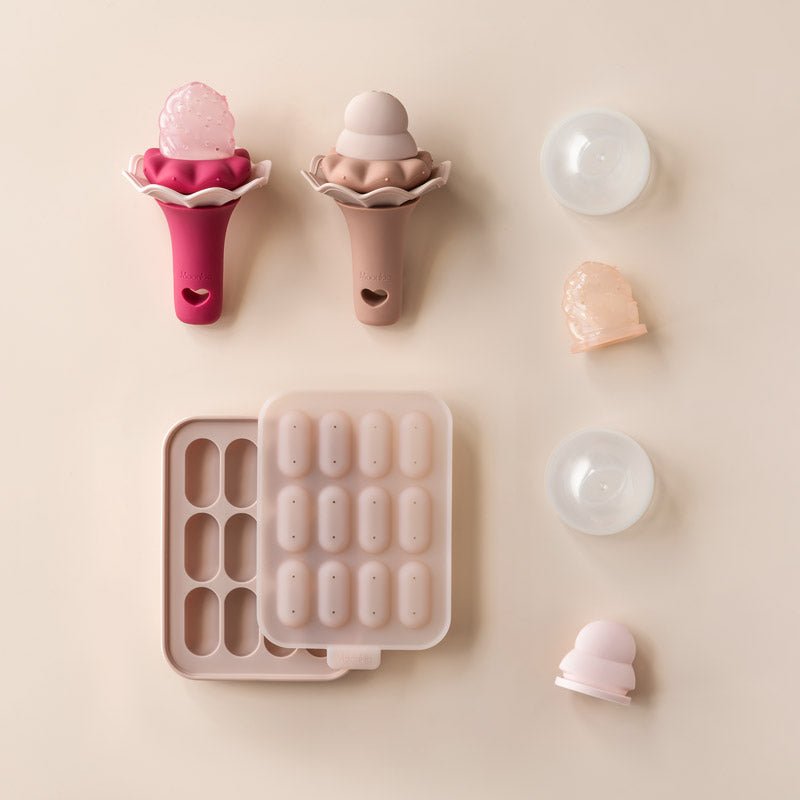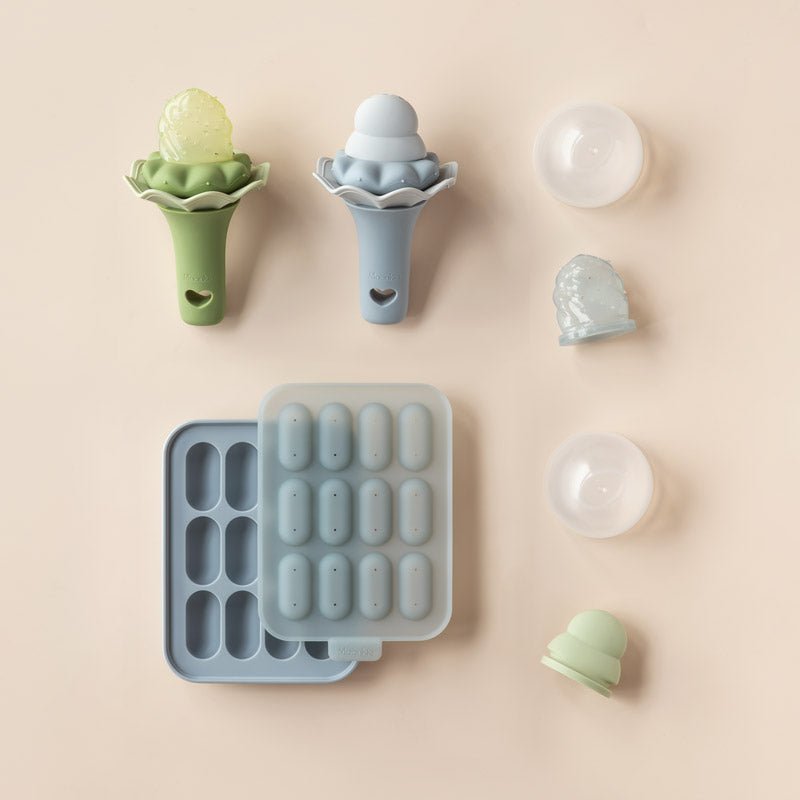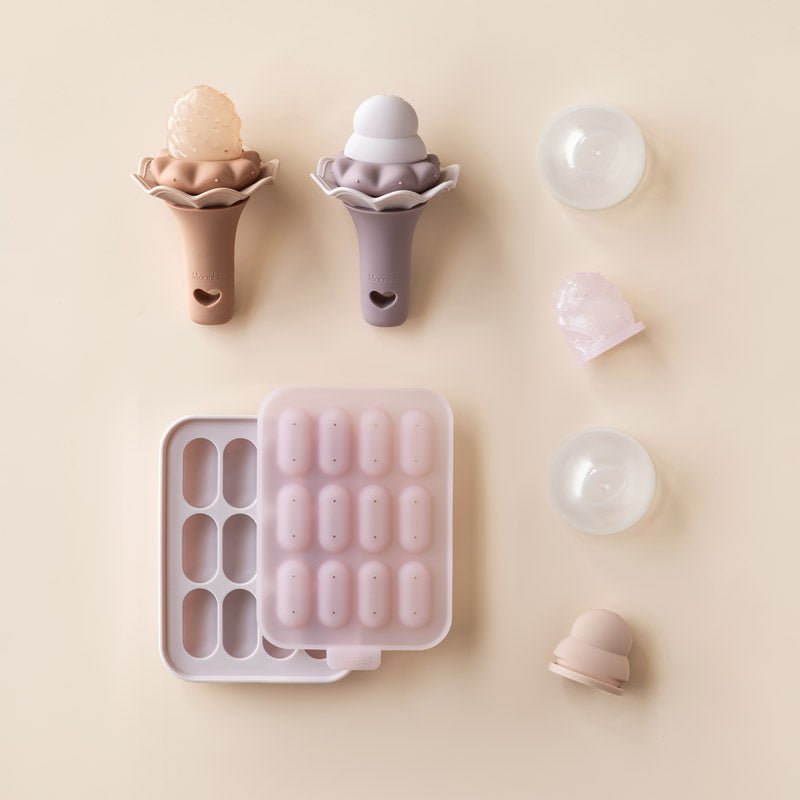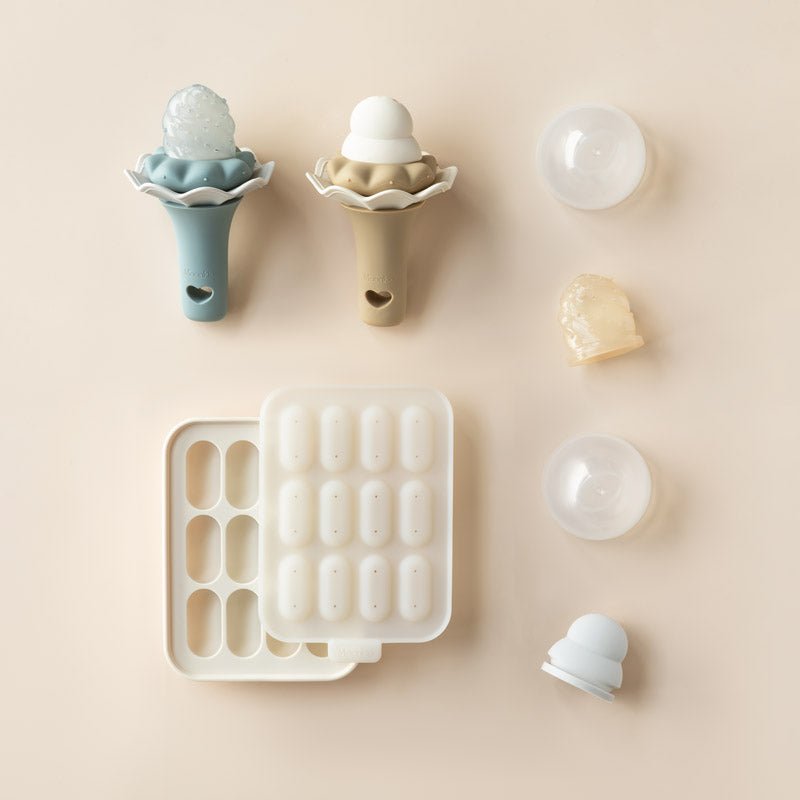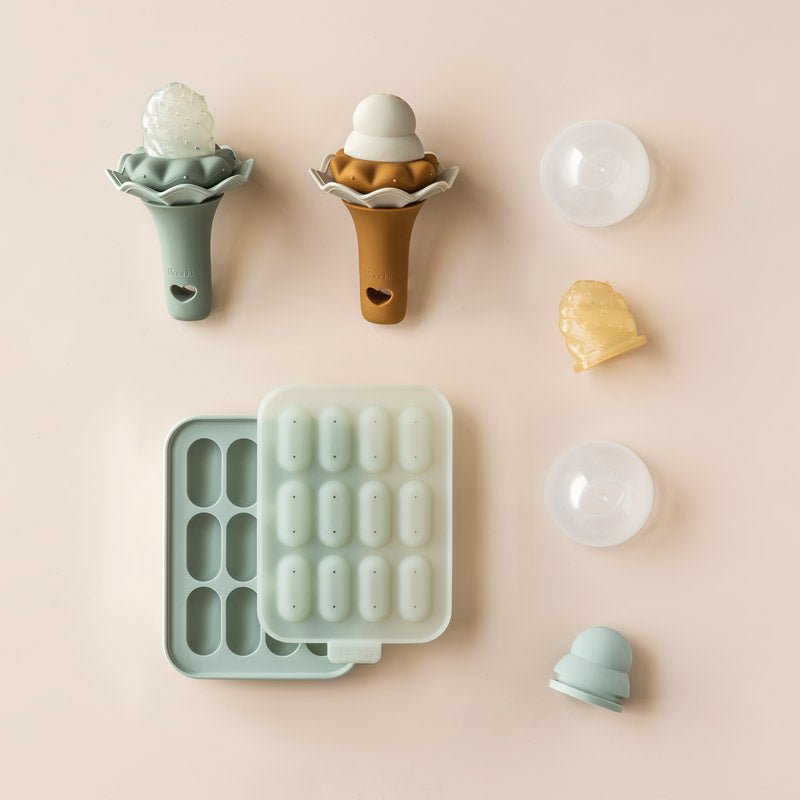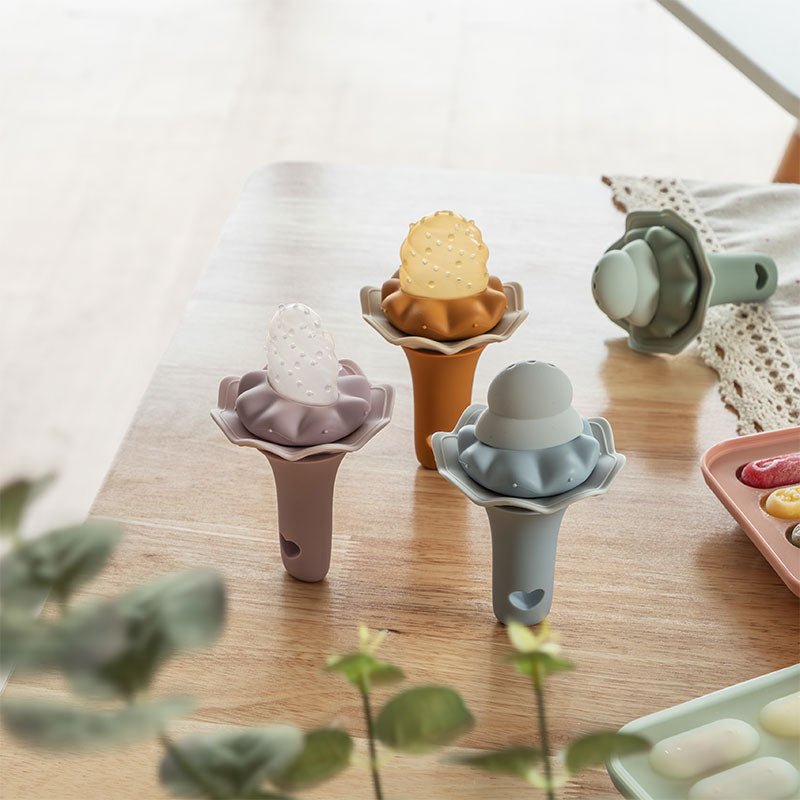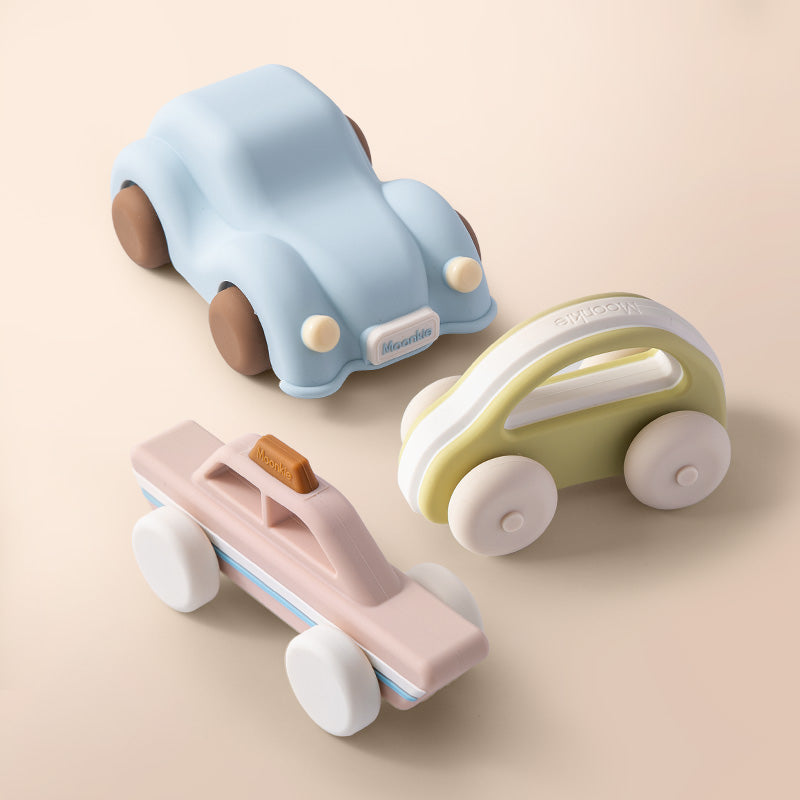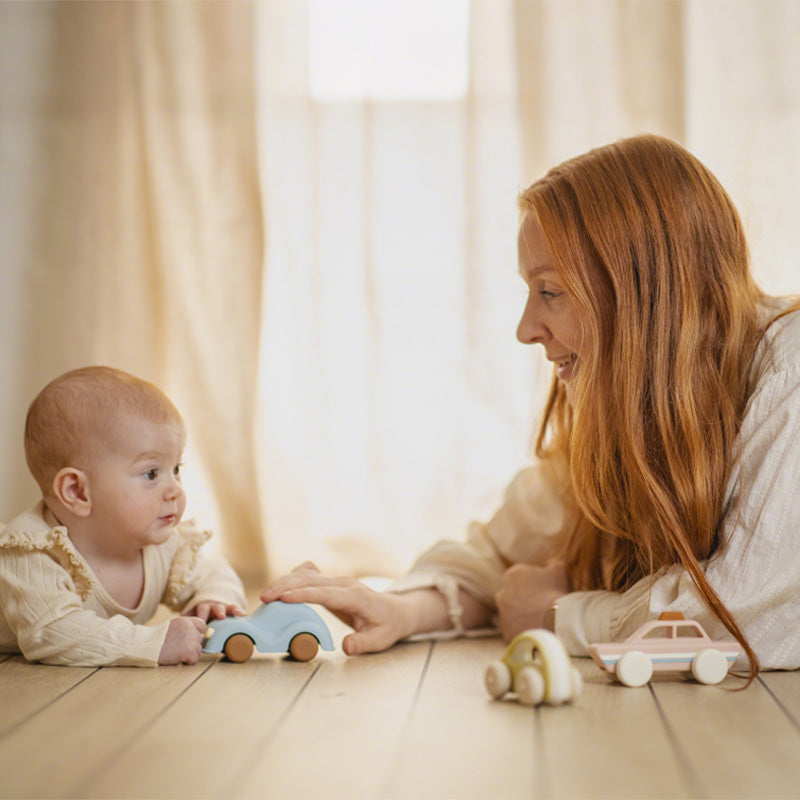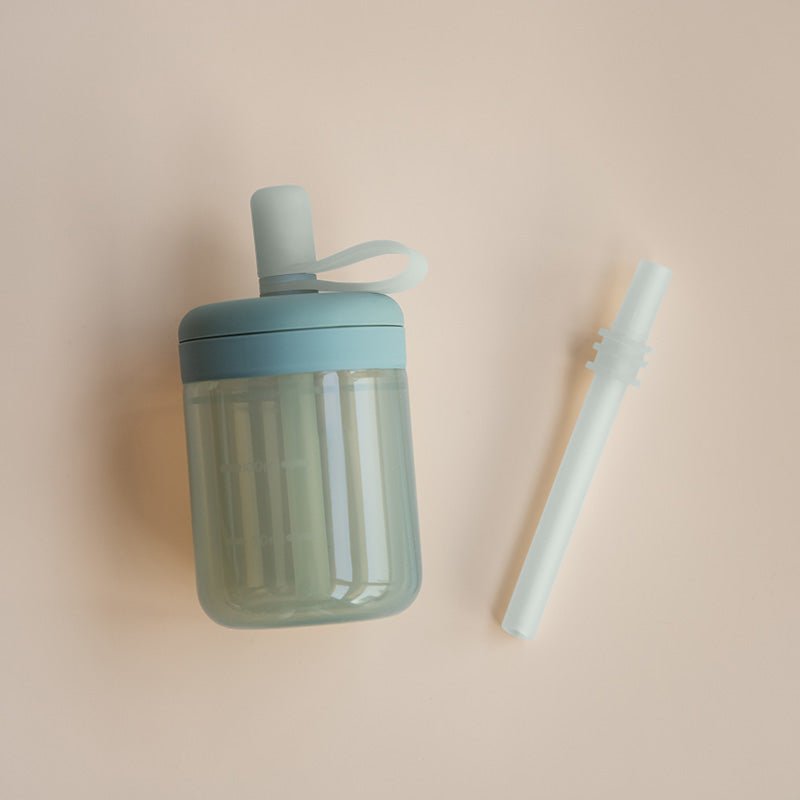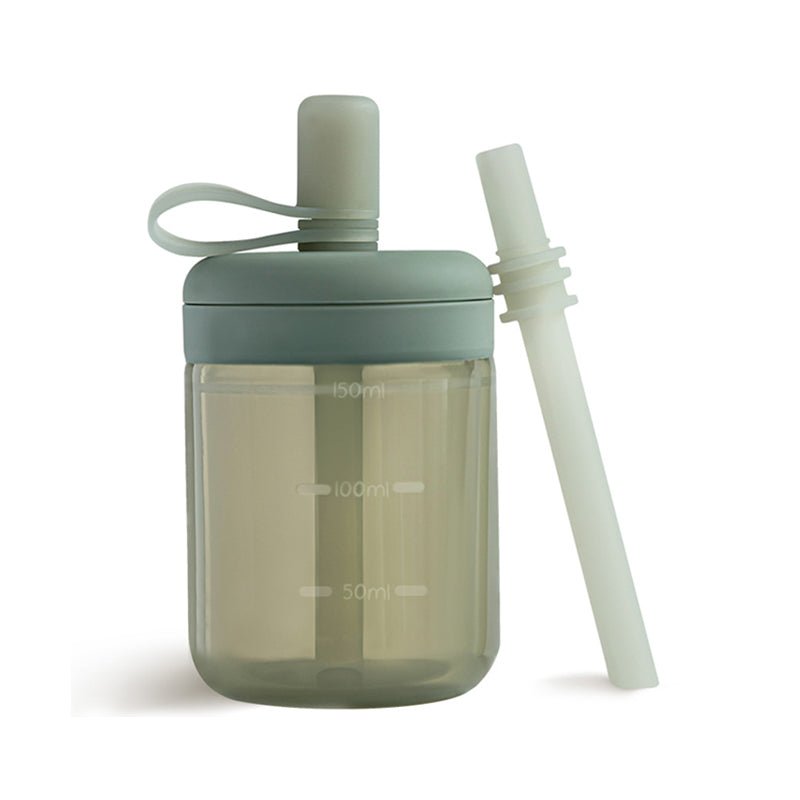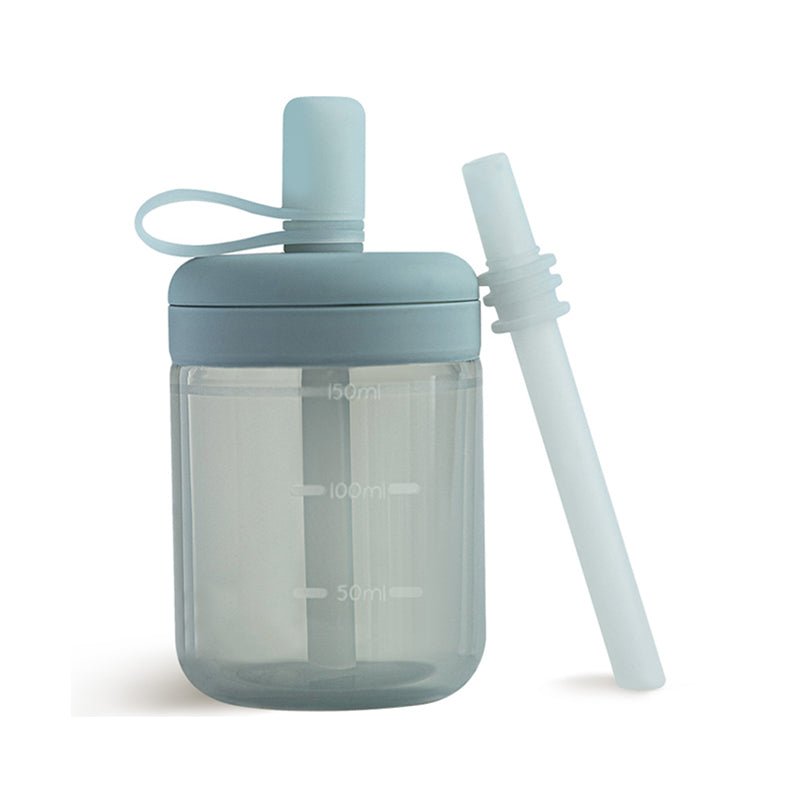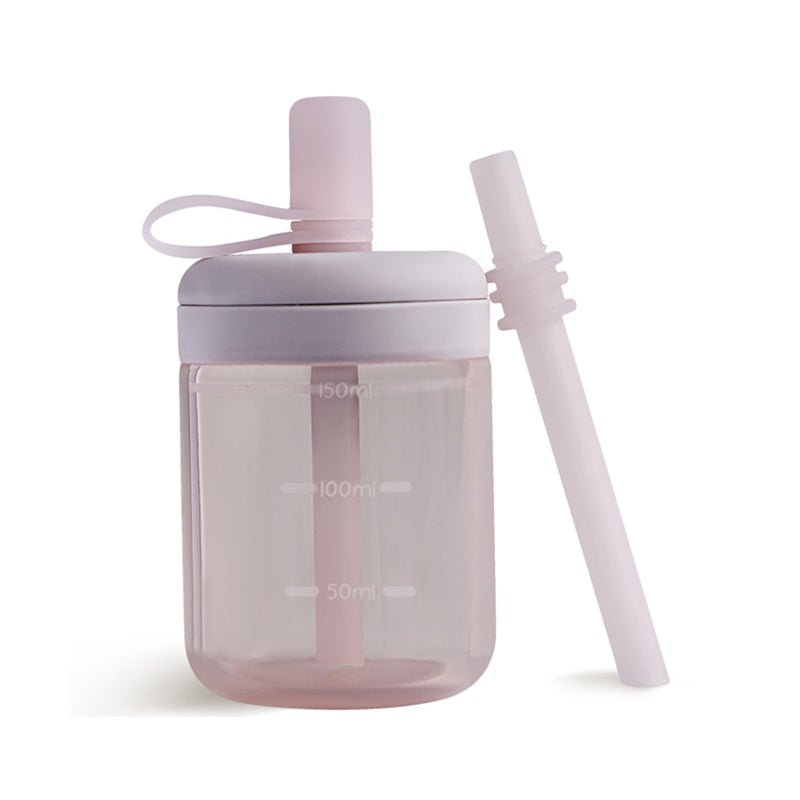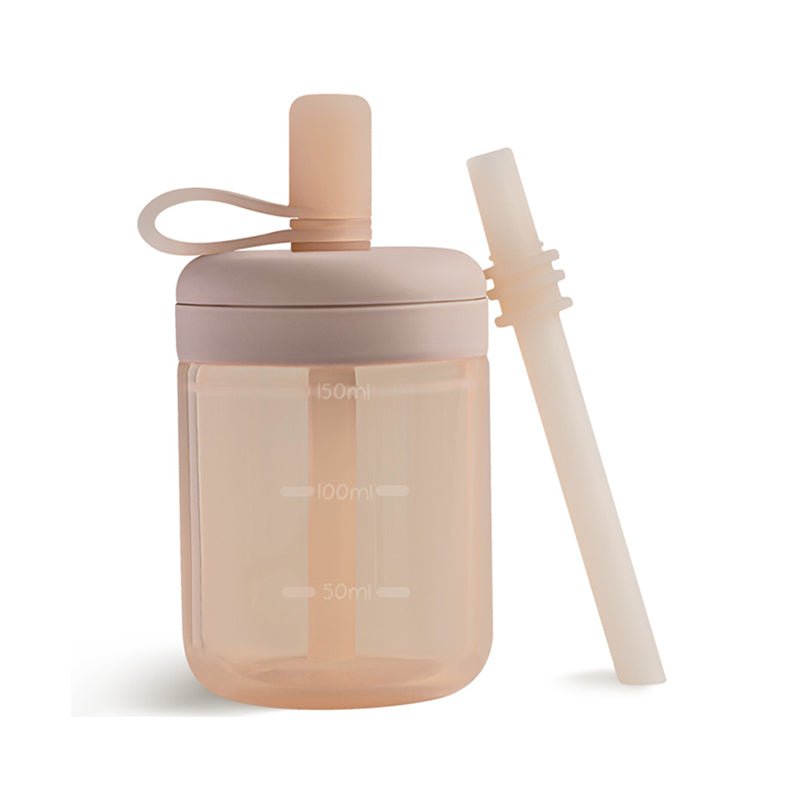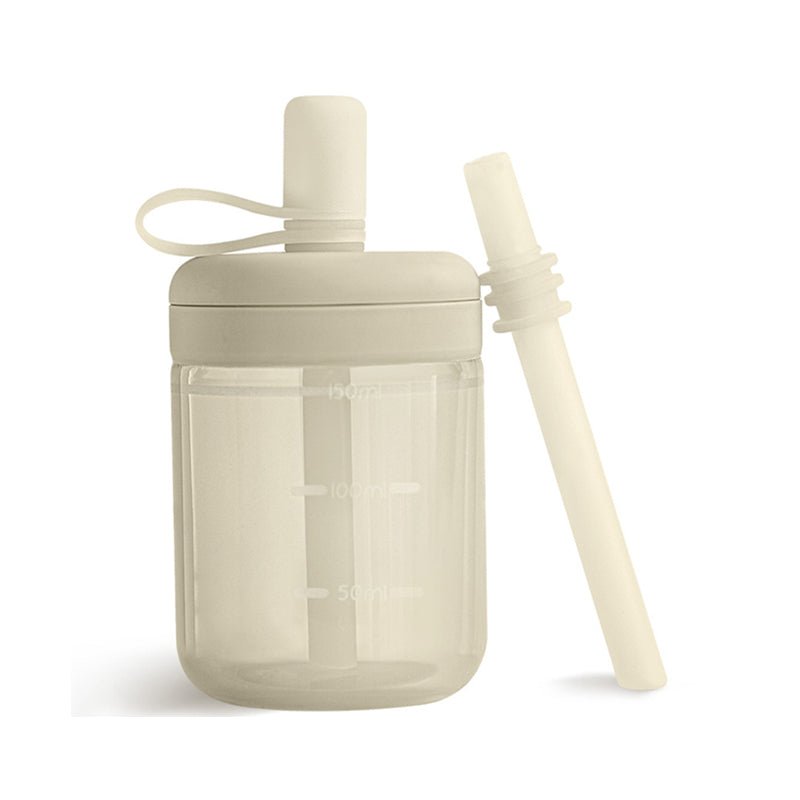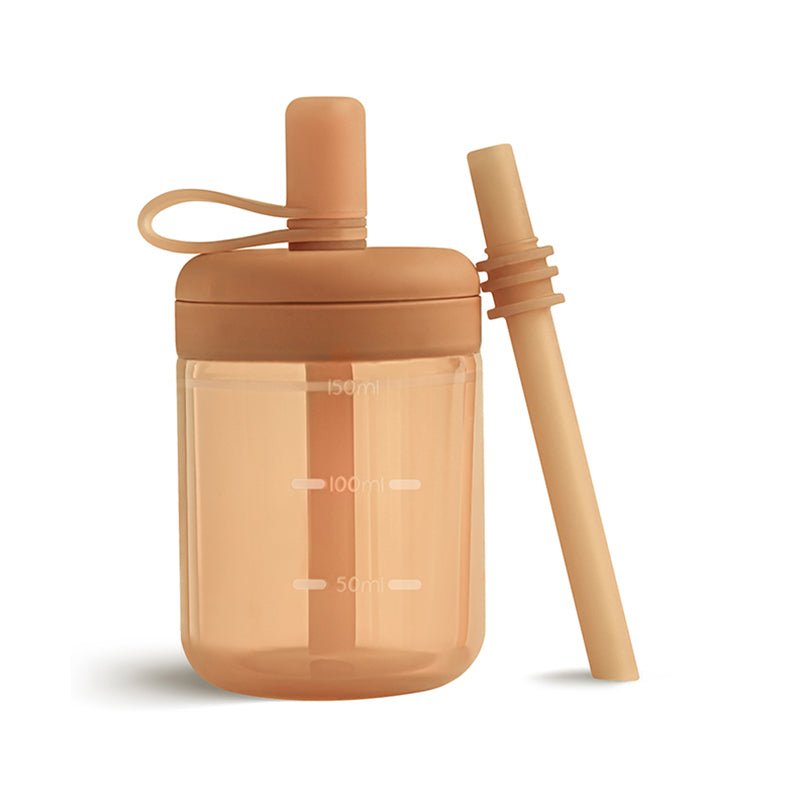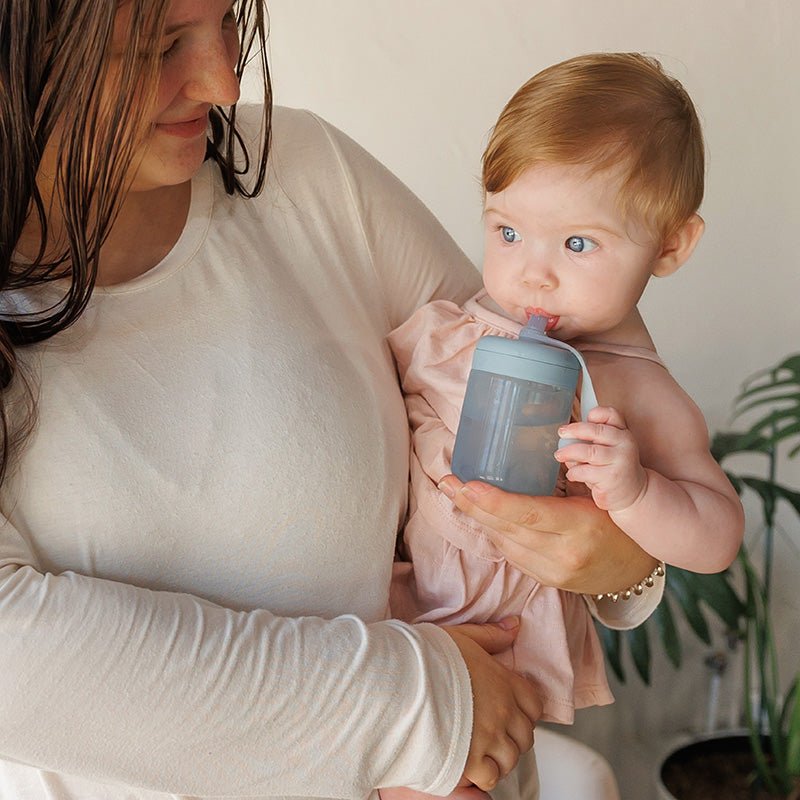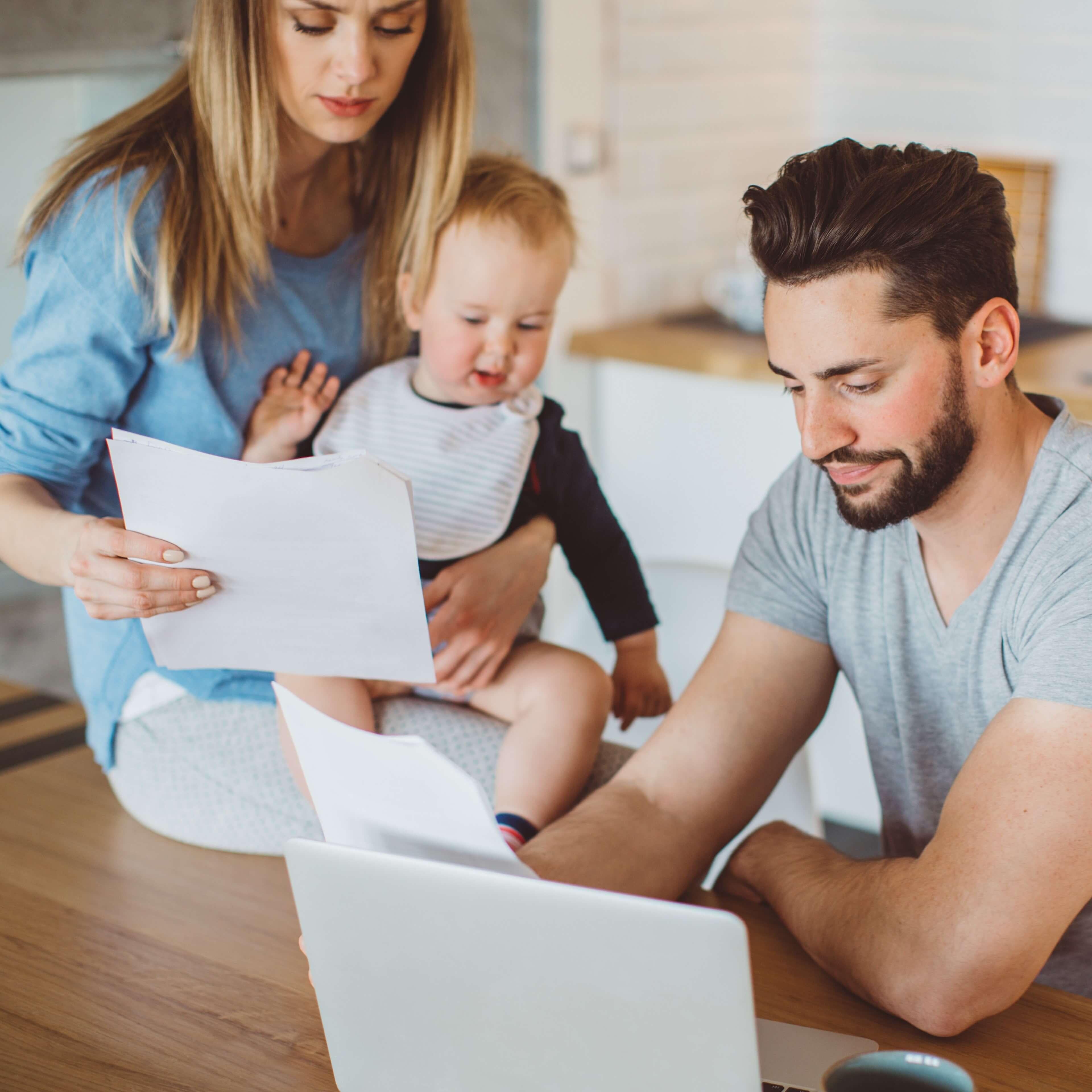Before you have a baby, life is a lot more carefree. You don't have to worry much about potentially toxic ingredients; you can buy a candle or shampoo just because you love the smell! But it turns out that many of our usual purchases for self-care and running a household are not good for a baby.
Babies' rapidly developing bodies cannot tolerate the same level of toxins as adult bodies. Some medicines, personal care products, and food that adults use regularly are toxic to babies. So, knowing what toxins are harmful to your baby and which products have them is essential.
This list may feel unsettling for some of you but know that there are some fantastic natural or baby-safe alternatives for everything here.
1. Cleaning Products
Household cleaners often contain harmful ingredients such as bleach, ammonia, the phthalates that are everywhere these days, and volatile organic compounds (VOCs), which can be harmful to babies.
Ammonia and bleach fumes can irritate the respiratory system and skin, while phthalates are known endocrine disruptors (source , source , source). VOCs, which you can find in many cleaning products, can contribute to nasty indoor air pollution and have been linked to a variety of health issues (source).
Here's a bonus tip: never mix bleach and ammonia; it creates chloramine, which is toxic, damages the lungs and can kill you (source).
When you need to clean, open some windows or circulate the air in your home. If you can, put your baby in another room while you clean to minimize exposure.
Here are some specific cleaners to watch out for:
Toilet Cleaner
Toilet cleaner can be toxic for babies who taste it or put it on their skin (because you know they might try it). Chemicals to watch out for in toilet cleaners are bleach, hydrochloric acid, or ammonia--all of which are bad for your wee one's skin, eyes, and respiratory system.
If you cannot find or afford safer toilet cleaner options, keep the bottles locked away up high, ventilate well after cleaning, and keep a lid-lock on the toilet to prevent your curious baby from reaching into the mysterious blue water.
Floor Cleaner
Some floor cleaners may contain harsh ingredients like ammonia, bleach, or certain surfactants that can irritate a baby's sensitive skin and respiratory system. Additionally, babies crawling and playing on the floor may come into contact with residues from the floor cleaner.
So, opt for baby-safe, non-toxic floor cleaners and rinse and dry your floors after mopping to ensure your little one doesn't contact the cleaner. It's even better to keep your baby off the floor or away from that area entirely until any fumes have cleared.
Disinfectants
Yep, the very thing parents are encouraged to use to feverishly prevent the spread of viruses and disease is another potentially toxic household good. Disinfectants, even wipes, are rated unsafe for children to apply themselves (source).
You can make them a lot safer by only using them on hard, non-porous surfaces away from the baby's reach and letting those surfaces or toys dry thoroughly before your little one touches them.
I preferred hand washing toys with soap and warm water once a week to using disinfectant sprays and wipes because I felt better about the soap ingredients than those in the disinfectants. However, not all toy materials can handle this process.
Read about various cleaning and disinfecting processes for baby toys in The Dos and Don'ts of Disinfecting Baby Toys: A Comprehensive Guide.
2. Pesticides
This one is a no-brainer: pesticides contain tons of harmful chemicals for babies, especially if ingested or exposed to a baby in high amounts (source). Some common ingredients to watch out for in pesticides are organophosphates, carbamates, and pyrethroids, among others.
Before you treat your home or lawn, ask about baby-safe alternatives or try using more natural recipes at home.
3. Some Houseplants
If you are really into houseplants, make sure you clear out any that are toxic to your baby. Some cause skin reactions, some are sharp or have needles that burn or sting, and some cause vomiting, diarrhea, or more severe reactions (source).

Here are a few common household culprits:
Philodendron
Devil's Ivy
English Ivy
Pothos
Dieffenbachia
Snake Plant
Peace Lily
Caladium
Common outside plants that are bad for your baby include:
Oleander
Daffodils
Holly
Morning Glory
Azalea
Mistletoe
Fox Glove
4. Air Fresheners
Air fresheners can be harmful to babies because they often contain VOCs and other nasty cocktails of potentially toxic chemicals (like fragrance oils, phthalates, formaldehyde, benzene, and more) (source).
As lovely as they smell, some air fresheners contain over 100 chemicals to get the job done, contributing to indoor air pollution. All this nonsense may cause respiratory issues, asthma problems, or eye, nose, and throat irritation.
Babies are particularly vulnerable to the irritating effects of these chemicals, so stick with opening windows, running air purifiers, or using baby-safe essential oils.
5. Candles and Wax Melts
But what about candles and wax melts? It turns out that anything with dyes, fragrance oils, or petroleum-based waxes is horrible for adults and babies when burned. They agitate the respiratory system in babies and sometimes even your pets.

Steer clear of paraffin wax and fragrance oils in particular; the soot and VOCs are harmful. If you are a die-hard candle or wax melt lover, opt for as simple and natural as possible:
pure soy or beeswax candles
cotton wicks (zinc-free if possible)
essential oil scents (no fragrance oils; stick with baby-safe oils)
6. Certain Essential Oils
Just because something is natural and sourced from plants doesn't mean it is safe for your baby. Some essential oils are no-nos for babies due to their powerful concentration, which can cause skin, eye, or nose irritation when airborne or applied to skin or stomach issues when ingested.
To be on the safe side, avoid diffusing or applying essential oils at all before your baby is six months old, and never apply essential oils directly to a baby or child's skin without a carrier oil. It's better to be safe than sorry.
Essential oils known to irritate the skin are (source):
thyme
citronella
oregano
cinnamon bark or leaf
cumin
lemongrass
clove bud
lemon verbena
bay
While pregnant or nursing, the National Association for Holistic Aromatherapy suggests avoiding these oils (source):
aniseed
basil
birch
camphor
hyssop
mugwort
parsley seed or leaf
pennyroyal
sage
tansy
tarragon
thuja
wintergreen
wormwood
Some strong essential oils, like peppermint, spearmint, camphor, and eucalyptus, can cause eye and nose irritation, so avoid using them in your diffuser. Instead, heavily dilute them (avoid camphor altogether for your baby).
Once your baby is old enough to be around a diffuser (around six months old), you can slowly introduce child-safe essential oils. Watch your baby closely for eye, nose, skin, or respiratory reactions.
These essential oils are a solid start (source):
lavender
roman chamomile
sweet orange
mandarin
ginger
lemon
tea tree
eucalyptus radiata (different from eucalyptus globulus)
7. Laundry Detergent
If you love using laundry detergent that makes your clothes and sheets smell good for days, you are probably using a detergent loaded with bad stuff for your baby. Such detergents have fragrances, dyes, and harsh chemicals like brighteners and enzymes that irritate a baby's skin and will be toxic if ingested.

If you notice dry skin patches or rashes, your little one is likely reacting to your laundry detergent. Shift to a gentle, hypoallergenic laundry detergent specifically formulated for babies with sensitive skin.
Some parents are unlucky because their baby will react to something in those baby-safe laundry detergents. If this is your lot, try busting everything back to the basics and make a powder laundry detergent at home from scratch.
Such recipes usually boil down to a combination of washing soda, baking soda, and borax. You can also put a 1/4 cup of vinegar in the rinse cycle to cut extra suds.
Extra tip: don't use dryer sheets or fabric softener with your baby. They are loaded with chemicals your baby doesn't need.
8. Some Personal Care Products
This is a doozy because we all use shampoo, conditioner, soap, and deodorant. However, it turns out that most of these have some nasty ingredients, like parabens, phthalates, and formaldehyde-releasing preservatives (source).
We're talking about skin irritation, endocrine disruption, and possible allergic reactions for babies and some adults. Here are a few to check before buying:
Shampoos and Conditioners
Babies don't need conditioners, so you can avoid the chemicals easily there, but shampoo must be rated baby-safe.
Better yet, look at the ingredients and ensure none of the following are in there (source):
sulfates
surfactants
parabens
formaldehyde
silicones (dimethicone, phenyl trimethicone, cyclomethicone, cyclopentasiloxane, cyclohexasiloxane)
mineral oil
coal tar
phthalates
alcohols
chemical dyes
fragrance oils
para-phenylenediamine
polyethylene glycols
triclosan
retinyl palmitate
benzene
resorcinol
selenium sulfide
You can find more natural shampoo options with coconut oil, olive oil, aloe vera, jojoba oil, avocado oil, shea butter, or tamanu butter. For conditioner, try rinsing hair with white or apple cider vinegar for shine or use a conditioning oil lightly (like Moroccan oil).
Everyone's hair and skin are unique, so it will take some experimentation to find options that best suit your family.
Soap
Of course, I must pick on soap, too. Your run-of-the-mill Ivory soap bar is full of nasty stuff for your baby, so don't even try it. Many soap bars and liquid soaps have synthetic fragrances, dyes, preservatives, or detergents--none of which belong on a baby's delicate skin.
Look for a gentle, mild soap made for babies, preferably free from sulfates, parabens, and artificial fragrances. You can also find natural, hypoallergenic baby soaps or handmade soap made from natural ingredients.
9. Perfumes and Colognes
After everything you've read so far, I'm sure this one makes sense. Perfumes and colognes are typically created with strong fragrances meant to hang around for a while.

Applying them to your baby or exposing them to your perfume or cologne by holding them can cause eye, nose, throat, or skin irritation or even a full-blown allergic reaction. If your baby already has an existing skin condition, perfumes and colognes will likely exacerbate them briefly.
Also, avoid letting a baby ingest perfumes and colognes, either directly or off your skin. The phthalates, alkylphenols, ethanol, acetone, and any of the other potential hundreds of chemicals that make up a perfume or cologne are not friendly for a little one's system.
However, your wee one won't likely get enough of them to cause significant problems (source).
10. Honey
This sweet gold is unsuitable for babies under 12 months of age because it may contain a bacteria (clostridium) that causes infant botulism. Infant botulism causes muscle weakness, poor sucking, a weak cry, and constipation (source).
A little one's digestive system is simply not robust enough to handle this bacteria, so pass on the honey for your little sweetie until sometime after that first birthday.
11. Cigarette Smoke
Cigarette smoke contains more than 7,000 chemicals (Crazy, right?), hundreds of which are toxic. Of those, around 70 can cause cancer (source). We also know that cigarette smoke may increase the chances of a stillbirth or sudden infant death syndrome (source).

Aside from that, babies and children breathing in secondhand smoke unfortunately have a higher chance of developing asthma, bronchitis, and respiratory infections, in addition to the heightened risks of lung cancer and heart attacks after years of exposure in childhood (source).
And, for the record, other tobacco products are also bad for babies, including smokeless tobacco, e-cigarettes, and clove cigarettes.
12. Baby Powder
Despite the cute name and long history of use, baby powder is not as safe as we were all led to believe. The American Academy of Pediatrics has recommended against using baby powders with talc for years due to potential cancer risks.
However, there are cornstarch-based baby powders out there. Are they safe to use? If you must use a powder, go for an unscented cornstarch-based baby powder.
Otherwise, it is best to avoid baby powders altogether in favor of diaper rash ointments because babies inevitably inhale powder during the application, leading to respiratory problems (source).
13. Certain Types of Glue
No one should eat glue of any kind, so protect those glue sticks if you have an older child doing an art project! The main types of glue to avoid are rubber cement, adhesives with a pungent smell (like superglue), and hot glue (source).

Stick to using glue sticks, tacky glues, and white glue for children's projects, but you should also keep those well away from your baby.
14. Some Types of Jewelry
Perhaps you should keep all jewelry away from your baby due to small pieces that are easy to swallow. However, some jewelry can be toxic for your wee one, particularly if they contain lead, cadmium, and nickel (source).
Be particularly mindful of vintage jewelry, family heirlooms, and mystery pieces. You may not know what metals they contain until you test them or have a jeweler take a close look at them.
15. Antifreeze
You would think everyone knows that antifreeze is toxic to babies and should be stored high and out of sight, but a few thousand ethylene glycol exposures are reported every year, and a small percentage of those result in death (source).

In 2002, there were 40 deaths and 254 near-fatalities in children under 5 (source). Believe it or not, the taste of ethylene glycol is sweet, and the color of antifreeze often looks cool to children (like a flavored drink).
The result of drinking antifreeze can be seen within a few minutes: seizures, paralysis, coma, vomiting, weakness, confusion, or an ashy complexion. After a few hours, the heartbeat may increase, and blood pressure could drop.
A day or two later, symptoms include decreased urine output, blood in the urine, or the inability to urinate. This is the precursor to multi-organ failure and death (source). If you suspect your baby or child has somehow ingested antifreeze, go to the ER right away. You cannot waste time with this.
16. Over-the-Counter Medications
Many over-the-counter medicines that are formulated for adults can be harmful to babies due to their active ingredients or dosages. For example, you should never give medicines containing aspirin to a baby, child, or teenager due to the risk of Reye's Syndrome (source).
Certain cough and cold medicines may cause serious side effects in babies. Always consult your pediatrician about safe medication for your little one, and check labels carefully for your baby's age and weight.
17. Water
Yep, the thing we all need to live on this planet can be bad for babies; specifically, water can intoxicate your baby. Confused? Well, infants rapidly develop in the first months of life. They need every calorie to count, so exclusively drinking breastmilk or formula is crucial.

When given water, several problems can happen:
less room for nutritious breastmilk or formula
weight loss with regular water intake
diluted sodium levels leading to seizures, brain damage, a coma, or death
If your little one is constipated or needs water before 6 months of age, only offer two to three ounces at a time after your baby has filled up on breastmilk or formula. Also, be wary of infant swim lessons where a baby can gulp water (source).
Once your little one is eating food, it is okay to offer water more often. However, pay attention to the metals and chemicals in your tap water. You can avoid potential issues by investing in a water filter.
18. Wood Floor and Furniture Polish
Wood floor and furniture polish contain all kinds of nasty things for babies and children: hydrocarbons, ammonia, aromatic solvents (benzene, toluene), phenol, petroleum distillates, silicones, trichloroethane, turpentine, and synthetic polymers (source).
If inhaled or ingested, this cocktail of chemicals can cause respiratory problems, dizziness, and nausea. In smaller amounts, wooden floor and furniture polish can irritate the skin and eyes.
So, if you must polish the wood in your home, try wiping everything down with a damp microfiber cloth first, then applying the polish with lots of ventilation away from the baby. Try to reduce how often you polish—maybe once a month instead of once a week.
19. Mothballs
Mothballs are incredibly useful, but they are also in reach of curious little ones beginning to wander around home. Made with toxic chemicals like naphthalene or paradichlorobenzene, mothballs are harmful when sniffed or tasted.

The main symptoms are headache, dizziness, nausea, and severe damage to red blood cells (in severe cases). Babies are the most vulnerable to red blood cell damage (hemolytic anemia) from mothballs because a small amount of naphthalene can go a long way in a system that can't clear out the toxins (source).
So, store them out of reach or use a different method to protect your clothes.
20. Paint and Paint Thinners
If you plan to give your space a facelift anytime soon, consider waiting until your baby is older or find someone to watch your wee one somewhere else while you paint.
Mothers catching whiffs of paint thinners during pregnancy may unknowingly harm their babies, potentially causing premature birth, low birth weight, a small head size, or developmental delays--similar to those exposed to alcohol in utero (source).
Most paints are oil-based or latex-based. Generally speaking, the fumes of either are not good for babies, children, or adults as lots of fumes cause headaches, nausea, eye or skin irritation, or loss of appetite. Obviously, eating paint will lead to worse symptoms, and the younger the eater, the more dangerous the amount.
Back in the day, lead and mercury were used in paint, so if you live in an older home, don't sand the walls around your children or work on them without a special painter's mask.
21. Certain Types of Plastics
Plastics have permeated every part of our modern lives. Harmful chemicals like BPA and phthalates are well-known chemicals to avoid; thankfully, you can find many plastic baby products without them these days.

However, there is a more alarming trend we should pay attention to as parents: microplastics. Microplastics are incredibly tiny plastic pieces smaller than 5 mm, most of which we cannot see. They either wear off larger plastics or are intentionally manufactured and added to health and beauty products as exfoliants (source).
We all ingest and inhale microplastics because we wrap our food in plastic, brush our teeth with it, and put it in our tools, cars, clothes, and everything else. The problem? We store microplastics in our bodies, and babies receive them through the placenta, breastmilk, toys, and home environment (source).
So far, exposure to phthalates through plastic has been associated with a 20% higher childhood cancer rate and a higher presence of phthalates and BPA in children with ADHD (source).
I go into the details of which types of plastic are common in baby products and why they are harmful in Are Plastic Toys Bad for Babies?
22. Batteries
We know that batteries are bad for babies and kids who might swallow or bite them, but did you know that button batteries are particularly dangerous? Button batteries are easier to swallow than longer batteries but also trigger an alkaline reaction when in contact with saliva (source).
Once this reaction starts, it melts through skin and tissue, burning a hole wherever it goes. If the battery isn't removed right away, the reaction can continue well after it is finally taken out.
23. Pet Flea and Tick Treatments
Most of us with fur babies use flea and tick treatments to keep our pets comfortable, our homes pest-free, and our health safe from diseases through ticks and fleas. However, chemicals such as tetrachlorvinphos (TCVP) are dangerous for pets, adults, children, babies, and pregnant women (source).

TCVP, in particular, may cause nausea, vomiting, wheezing, respiratory problems, or seizures. For little ones, the risk is brain development harm and an increased risk of learning disabilities.
Pyrethroids are another chemical pesticide to watch out for in flea and tick treatments. This increasingly common pesticide is in all kinds of treatments, including head lice treatments for children and flea and tick treatments for pets. It has been linked with brain development issues in children (source).
When following the instructions for a flea collar or a treatment, they typically suggest not touching those areas until they are dry. However, the residue stays on your pet's fur for days, wiping off on furniture, rugs, towels, and hands.
Moreover, many of these products simply say, "Don't let children play with collar" or "harmful if swallowed or absorbed through the skin," but neglect to say how dangerous the residue can be on the treated pet (source).
24. Alcohol
Drinking alcohol while pregnant increases the odds of miscarriage, premature birth, or a baby's low birth weight. After birth, the effects of alcohol can continue to haunt little ones exposed to it in the womb through fetal alcohol spectrum disorder (FASD) (source).
Basically, FASD impacts the brain through learning, behavior, self-control, managing emotions, developing social skills, communication skills, and hyperactivity. It also affects the joints, bones, some organs, and muscles.
If you drink alcohol 30 to 60 minutes before breastfeeding, your baby will still be impacted (source):
lower milk production
sleep disturbances
increased crying
decreased weight gain
decreased appetite
less deep sleep
Though avoiding any alcohol is the safest policy, having one standard drink is not known to be harmful to a nursing infant. Just time it to be at least two hours before breastfeeding. You can define what "one standard drink" is here.
25. Nail Polish
Bringing up the end of our list is nail polish. Some nail polishes are fine, but you must peruse that ingredient list. If you see formaldehyde, toluene, or dibutyl phthalate, it's a no-go for a baby (or maybe even for you as you feed and change your baby).

Look for nail polishes labeled non-toxic and free from harmful chemicals. Whenever you apply it, do so in a well-ventilated area away from your baby to ensure nothing is breathed in.
A Note on Stress
Of all the things on this list, one of the most dangerous is one that you can't see: stress. Your little one clings to you for everything, including emotional support. So, when you are stressed out, your stress affects your baby, too.
If things cycle through loud arguments, lashing out, yelling, hardship, abuse, substance abuse, and breakdowns, your baby could develop toxic stress. Toxic stress can result in a whole slew of physical, cognitive, social, and emotional symptoms (source):
withdrawing from others
tantrums
headaches
stomach aches
frequent nightmares
difficulty sleeping
As a child becomes older and more capable, toxic stress can lead to defiance, substance abuse, risky behavior, aggression, or self-harm (source). But, we can get a handle on stress and our situations early in our child's life because more help is available than ever before.
Handling Stress Sooner Rather Than Later
Unfortunately, being in over our heads is a normal part of modern living. We have so many opportunities today that it's hard to say no. Moreover, we think taking in hundreds of messages on social media, video platforms, and TV is "restful."
Babies add a lot of stress because they need you for everything. But that's not going to change much in the next few years. Your little one will still need you throughout childhood, just in a different way.
One of the best things you can do is learn how to differentiate between good things and best things so you can add what's best for your family instead of all the things. Also, learn to take a breather, talk to your partner, find time to exercise outside, and get support from folks who have been where you are now.
The better you manage your stress now, the healthier and happier your little one will be emotionally.
In a Nutshell
Phew! This article was a doozy to write, but I hope you find it helpful. Not everything around your home is toxic to your little one, but knowing the dangers around you, practicing solid storage and application practices, and switching to baby-safe alternatives when possible will drastically improve your baby's safety at home.

